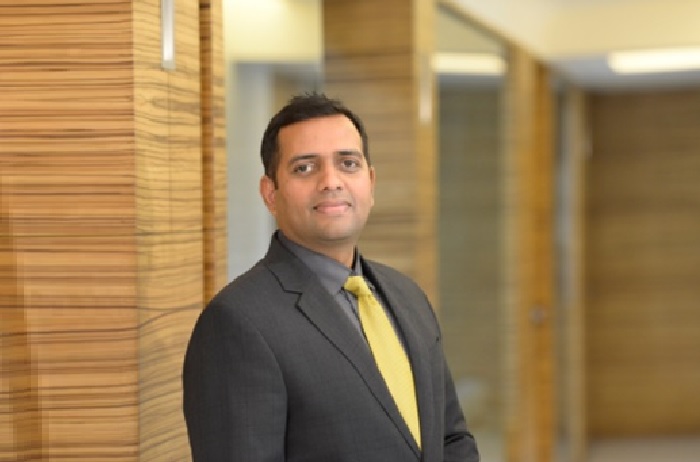Mumbai’s ambition of being the international financial hub for attracting talents and investments, primarily and critically rests on the real estate drivers of locations and costs. already ranked highest in the country as a cosmopolitan city, Mumbai the city of dreams is of prime attraction due to its strength of intellectual base, direct exposure to world’s best innovation in technology and latest trends in architecture as well as lifestyles.
In this context, Mumbai is ready to move from the experimental grounds of various commercial and residential development policies to a further higher ground to achieve urban innovation, sustainable energy solutions, digitisation and social upliftment of the common man in to a new era.
New technologies, integrated residential and commercial hubs, digital retail (online market places) will merge all the core developments thereby bringing a modern ecosystem to the city in the coming decade.
Transformation of Mumbai is a mix of intensive micro planning, complete superimposition of the infrastructural network and ensuring to rekindle the social engagement of the common man in this city along with green and open spaces.
This is the key ‘mantra’ to strictly ensure ‘life’ is brought back to every socio-economic level of Mumbai the LIG, MIG and HIG respectively. after having ensured that this master plan is in place with the micro-facets of bringing happiness to the city, the city can transform every significantly.
2018: With complete enforcement of the ‘Green’ master plan, open spaces and infrastructural corridors of roads, viaducts, metro, monorail, flyovers, waterways, airways with integrated development hubs for commercial, retail, art, entertainment and education can be the ‘given’ defining factors. The city will for sure develop around these stimulus to make it a more cohesive web.
Visibly: opening up of spaces, complete disarray of various transportation networks and clerics of affected spaces will be distinctly visible. With the state elections around the corner in 2019, the ‘feel good factor’ will certainly entice the developers to launch and complete their projects in record time, which will further show up in the skyline of the Greater Mumbai precincts.
2020: Due to a well foreseen and planned master plan of the city in place, the year 2020 will see a maximum number of high rise towers at finishing stages which will render ‘new city on a city’ (refer to image) development. However, with eh advent of the new ‘dress’ code of fungible FSI, the skyline though dense will be a great challenge for architects and designers. To ensure better visual relief will be a focus to be achieved in every structure coming up.
Visibly: An incomplete skyline with most intensive construction spree, this city has ever seen will be in progress of building and tower cranes, dust and concrete. Mumbai at this point shall be on a cusp of new look which will really be there for another century. The transport and infrastructural projects here would be on the verge of completion but the city will be in a chaos.
2025: Probably the best era Mumbai, the year 2025 will show a compete unleashing of a greener, open and faster Mumbai will be in place. due to decongestion of vehicular traffic with fully functional public transport, people will commute more confidently from one part of the city to another. A mixed used development of residential and commercial spaces will critically help to ensure there is a mix of profiled form based buildings, also along with solid massed residential towers.
Policy & Planning
A conducive policy with respect to Mumbai’s core concerns of aces, dilapidated structures, affordability is very important tonsure successful ideas of gated communities integrated developments, mixed-use development fall enlace for which minimum land parcels of 5-10 acres are a must. the only ray of hope to achieve a ‘walk to work’ concept is to make sure mixed or integrated development projects are implemented within the MMR region if not only in the Greater Mumbai and its suburbs. the sources of achieving larger land parcels were mill lands, semi-private spaces for cluster developments which may allow larger developable spaces. It icier then the planning and interior design would also create a major role to enable more space, terraces, balconies and liveable spaces successful transform the ‘matchbox’ living to ‘open box’ living.
Large Infrastructure Projects
Infrastructure and public transportation projects arena of the key stimuli to the development of real estate at least for the LIG and the MIG segments of the society. this is only due to the convenience but also due to the thrust to enhance real estate prices because of the proximity to such public transport hubs.
Project differentiators / USPs
Due to the mass development envisaged in the near future with millions of potential sale spaces in the block, it will be a testing time for the potential developers interested to engage in such projects. after the rigorous pitch work to convince the potential land owners/tenants, overcoming the hurdles to achieve timely building permissions, to work within the bye laws; the biggest challenge which would still lay forth would be to sell. Wherein project differentiators would play a significant role in the success of a project.
The biggest USP of the project shall be its ‘location’ followed by amenities, user friendly features with respect to open spaces like terraces, balconies, decks, gardens etc. The availability of convenient parking and rightful utilities is a vital governing factor rendering success to a project.
Green Structures
Green development is an extremely important virtue whitewall on a whole reduce the burden on the support system of the city with respect to power consumption, waste disposal and water management. By mere virtue of rightful design of services, bundling profile, sun paths, wind paths and using recyclable materials we can for sure create a self sustainable development. Just imagining the fact that all the future development can be ‘Net Zero’ will simplify the overburdened utilities and infrastructure on the whole.
The views belong to Architect Parish Kapse, Partner, Team One Architects, Mumbai, India


